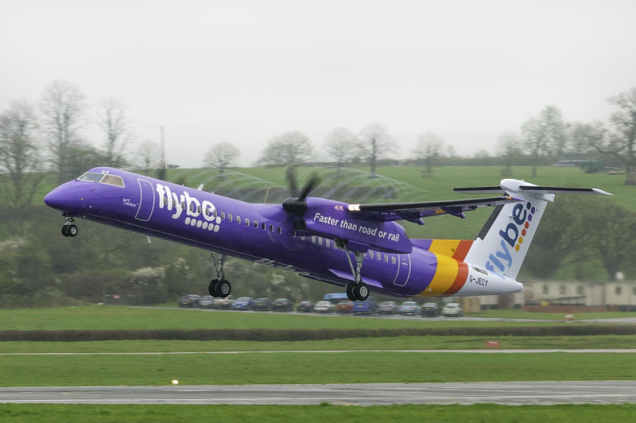They’d warned me that the aircraft would be small, but when I stepped out onto the runway I felt a tiny shock. It had propellers. The last time I took a plane with propellers, I recalled, I was flying from Budapest to Warsaw. I remember looking down at the forested foothills of the Carpathian Mountains and imagining crashing there, amid the wolves and the vampires.
This trip was somewhat less glamorous. I was flying to Bournemouth. Nothing remotely dangerous has ever happened in Bournemouth. But my parents live there, so I was looking forward to my father’s old jokes and a solid lunch of fish and chips.
The airline was called Flybe, a low-cost that had inaugurated a direct flight between Roissy and Bournemouth a couple of months earlier. It seemed a bit shy about advertising the fact – I’d only found out about it by word of mouth. Even the check-in desk was timid, lurking in the depths of terminal 2E among grander, better-known airlines. I practically had to look under a sofa to find it. Next door, Air France hummed along in dysfunctional splendour.
Predictably, the flight was half empty. It was also a little noisy, especially if you were sitting near the propeller-equipped wing, as I was. At least it was on time – unlike the return flight, which was delayed by 45 minutes. A man in the queue behind me said: “That’s why we call it ‘Maybe’.”
But I rather liked Flybe, with its fast check-in and plucky little planes. I was astonished to discover that the brand had been around since 2002, when it changed its name from British European (“Fly BE” – get it?). As far as I can tell, its marketing strategy involves positioning it as an alternative to road or rail for short haul trips: “Think in minutes, not in miles,” reads one of its ads.
Secretly, though, I embraced Flybe because it reminded me of the golden age of flight. The tiny airport at Bournemouth, little more than a hangar with a café, could easily have been Croydon Airport in the 1930s, where the very first British air passengers embarked on rickety flights to the far corners of the Empire. At its height, the network stretched as far as Egypt and India.
The airline was called Imperial Airways. Its planes were so primitive that they were unable to fly at night, so they were forced to land at sundown. Occasionally they lost their way – more than one landed in the desert.
Seating was basic – metal chairs whose legs fitted into slots in the floor, and had a habit of disengaging if you tried to lean back. As the aircraft could fly no higher than 3,000 feet, the cabins were not pressurised. Passengers were told they could wear normal clothes, but were advised to put on an extra layer if they opened the window. Pilots flying over Africa occasionally diverted so their passengers could watch animals stampeding below.
In terms of branding, however, Imperial was rather modern. For example, it sponsored a magazine called Airways. In return for its financial support it got two advertising pages per issue, plus 4,000 copies to distribute to customers on its mailing list. More copies were handed out free of charge at Croydon Airport. Branded content avant l’heure. Imperial could ban competitive advertising and negative commentary and, the cherry on the cake, received 15% of the magazine’s profits.
Airline history geeks love Imperial’s arrow-like logo, the Speedbird, designed by Theyre Lee-Elliott in 1931. It survived the transformation of Imperial into BOAC and finally British Airways, before being retired in 1984. But an echo of it lives on – in the form of the international radio call sign for British Airways.
Imperial was also famous for its fleet of giant flying boats, perhaps the most charismatic planes ever to take the air. They were so large that they contained restaurants and promenade decks. By coincidence, when I visited my parents, we stopped off at the museum in Poole, the neighbouring town. Poole has the largest natural harbour in Europe. It is also where the old Imperial flying boats used to take off.
And there they were, in photographs and even short films, these lumbering yet strangely graceful beasts. After my Flybe experience that morning, I felt as if past and present had met. Flying today is sanitised, safe and often dull. But from time to time, it can still be magic.




